Reaching For Digital Maturity | Why It Matters & How To Proceed
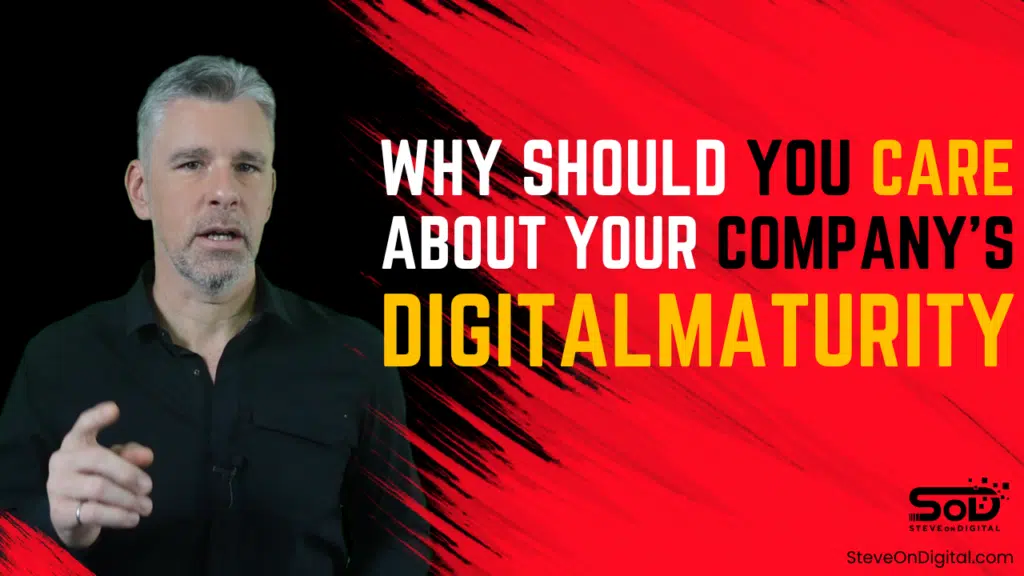
Digital maturity refers to how well a business uses digital technologies to improve its operations, culture, and customer experiences, leading to business growth and value. It involves adopting advanced technologies, optimizing processes, and fostering a culture that embraces continuous learning and innovation. Understanding and achieving digital maturity is essential for staying competitive. Companies that invest in digital transformation see increased revenue and market share. For instance, 89% of companies have adopted or plan to adopt a digital-first strategy, showing the growing importance of digital initiatives in today’s business landscape (Digital Adoption) (Kissflow Platform). I’m Steve, a digital transformation expert with a strong background in electrical engineering, an MBA, and a master’s in Project Management. I excel at helping SMEs navigate the digital landscape with practical insights. Let’s begin! Digital Maturity: An In-Depth Exploration Digital maturity refers to the extent to which an organization utilizes digital technologies to enhance its processes, culture, and customer experiences, ultimately driving business value and growth. This comprehensive guide explores the nuances of digital maturity and provides actionable insights for small business owners to navigate their digital transformation journey. Understanding Digital Maturity Digital maturity is about how well a business integrates digital technologies into its operations. It encompasses the adoption of advanced technologies, process optimization, and cultural transformation to meet the evolving needs of customers and market demands. Importance Of Digital Maturity Achieving digital maturity is crucial for staying competitive. Companies that invest in digital transformation see significant benefits, such as increased revenue and market share. For instance, 89% of companies have adopted or plan to adopt a digital-first strategy, showing the growing importance of digital initiatives in today’s business landscape (Digital Adoption) (Kissflow Platform). Key Elements Of Digital Maturity Digital Maturity Models Digital maturity models are frameworks that help businesses assess their digital capabilities and identify areas for improvement. Overview Of Digital Maturity Models These models provide a structured approach to evaluate an organization’s current digital maturity level and guide their transformation journey. They typically cover various dimensions, such as technology, strategy, operations, and culture (Whatfix). Popular Digital Maturity Models Model Name Key Dimensions Covered Description Source Boston Consulting Group’s DAI Technology, Strategy, Operations Benchmarks company’s digital capabilities against industry standards Whatfix Deloitte’s Digital Maturity Model Customer, Strategy, Technology, Operations, Culture Comprehensive assessment focusing on data to maximize business value Whatfix Benefits Of Using Digital Maturity Models Using these models helps organizations: Stages Of Digital Maturity Digital maturity progresses through several stages, from initial awareness to full digital integration and innovation. Initial Stage: Digital Awareness At this stage, businesses recognize the importance of digital transformation and begin exploring digital tools and strategies. Most organizations start here due to technological disruptions that necessitate change (Whatfix). Intermediate Stage: Digital Integration Businesses at this stage integrate digital technologies into their core processes, enhancing efficiency and collaboration. They develop a clear digital strategy and begin scaling their initiatives across the organization (Whatfix). Advanced Stage: Digital Innovation In this stage, businesses lead in digital innovation, using advanced technologies like artificial intelligence and data analytics to drive growth and competitive advantage. They continuously optimize their digital processes and culture (Whatfix). Assessing Digital Maturity Assessing an organization’s digital maturity is essential for understanding its current capabilities and planning future initiatives. This assessment helps businesses identify strengths, weaknesses, and areas for improvement, guiding their digital transformation efforts effectively. Digital Maturity Assessment Tools To evaluate digital maturity, various tools and methods are available. These tools provide insights into different aspects of digital capabilities, helping organizations measure their progress. Tool Name Purpose Key Features Source Boston Consulting Group’s DAI Benchmarks against industry standards Clear picture of current digital capabilities Whatfix Deloitte’s Digital Maturity Model Comprehensive assessment Focuses on customer, strategy, and technology Whatfix Self-Assessment Surveys Self-evaluation of digital maturity Series of targeted questions Whatfix Conducting A Digital Maturity Assessment Performing a digital maturity assessment involves several steps: Using Assessment Results For Improvement Leveraging the outcomes of your digital maturity assessment can drive meaningful improvements in your digital transformation journey: Digital Transformation Journey The digital transformation journey involves a series of strategic initiatives aimed at enhancing an organization’s digital capabilities. This journey is essential for adapting to the digital age and staying competitive. Planning The Digital Transformation Journey Developing a digital transformation roadmap is a critical step. Key considerations include: Implementing Digital Transformation Initiatives Executing digital transformation projects requires careful planning and execution: Overcoming Challenges In The Digital Transformation Journey Common obstacles during digital transformation include: Key Digital Technologies Digital technologies play a pivotal role in achieving digital maturity and driving business growth. Understanding and integrating these technologies is crucial for any digital transformation effort. Role Of Artificial Intelligence Artificial intelligence (AI) technologies contribute significantly to digital maturity by: Importance Of Data Analytics Data analytics is essential for business decision-making and performance: Integrating New Technologies Incorporating advanced technologies into existing business processes involves: By following these guidelines, you can successfully assess your digital maturity and navigate your digital transformation journey, leveraging key technologies to drive business growth and competitiveness. Digital Leadership and Culture Strong digital leadership and a supportive culture are vital for fostering digital maturity. My journey through digital transformation has taught me the importance of these elements firsthand. Developing Digital Leadership Skills Effective digital leaders need a specific set of skills and attributes: Promoting a Digital Culture Cultivating a culture that embraces digital transformation involves several strategies: Role of Leadership in Digital Maturity Leadership plays a crucial role in influencing the organization’s digital maturity level: Digital Strategy and Planning A well-defined digital strategy is crucial for guiding an organization’s digital transformation efforts. Creating a Digital Strategy Formulating a comprehensive digital strategy involves several steps: Aligning Digital Strategy with Business Goals Ensuring that the digital strategy supports and enhances overall business objectives is crucial: Monitoring and Adjusting the Digital Plan Tracking the progress of the digital strategy and making necessary adjustments is key: KPI Description Measurement Criteria Customer Satisfaction Measures how satisfied customers are with products/services Net Promoter Score (NPS), Customer Satisfaction
Streamline Your Workflow with a Kanban Board: Your Ultimate Guide

Have you ever felt overwhelmed by your to-do list or struggled to keep track of your team’s tasks? If so, you’re in for a treat! Today, we’re going to dive into the wonderful world of Kanban boards and how they can revolutionize the way you manage your projects. So, let’s get started! First things first, what exactly is a Kanban board? Well, imagine a visual representation of your work pipeline, where tasks flow from left to right. A Kanban board typically consists of columns representing different stages of work, such as “To Do,” “In Progress,” and “Completed.” Each task is represented by a card that moves across the board as it progresses. It’s like having a bird’s-eye view of your entire workflow. These cards can be as simple as Post-Its on a white board. No need to complicate things. But you may find that the collaborative functions of a digital Kanban board make it more attractive. Now, you might be wondering how this ingenious tool came to be. Kanban was initially developed by Toyota in the 1940s as part of their manufacturing process. The word “Kanban” translates to “visual signal” in Japanese. It was designed to optimize production efficiency by enabling teams to visualize their work, identify bottlenecks, and improve overall productivity. Fast forward to today, and Kanban has found its way into various industries beyond manufacturing. From software development to marketing campaigns, Kanban boards have become a staple in project management. Some famous examples are Apple, Spotify and Pixar. So, why is it so popular? Let’s explore the advantages. One of the greatest advantages of using a Kanban board is its simplicity. It provides a clear and intuitive way to understand the status of tasks at a glance. With all your cards neatly organized on the board, you can easily see what needs to be done, what’s in progress, and what’s already completed, what I like to call: “To Do,” “Doing,” “Done.” This transparency promotes collaboration and helps teams stay aligned towards their goals. Another key advantage is its flexibility. Kanban boards can be tailored to suit your specific needs. You can customize the columns, add labels or tags, and even assign tasks to team members. Whether you’re working solo or with a large team, a Kanban board adapts to your workflow, making it a versatile tool for managing projects of any size. Now that you know the benefits, let’s explore how to use a Kanban board effectively. The key is to keep it simple and avoid overcrowding it with too many tasks. Start by creating a “To Do” column and populate it with actionable tasks. As work progresses, move the cards to the appropriate columns. Regularly review your board, identify bottlenecks, and adjust your workflow accordingly. Collaboration is vital when using a Kanban board. Encourage your team members to update their tasks and communicate progress. Assign responsibilities, set deadlines, and encourage open discussions. By working together and leveraging the visual nature of the Kanban board, you’ll enhance team collaboration and ensure everyone stays on track. Additionally, take advantage of the board’s analytics. Many digital Kanban board tools provide insightful metrics and reports that can help you track team performance, identify trends, and make data-driven decisions. Analyzing these metrics will enable you to optimize your workflow, improve efficiency, and deliver high-quality results. I’ve shown you an example using Microsoft Planner, but there are other online Kanban boards such as Trello and Asana. In my years as a virtual CIO, I have become convinced that a Kanban board is an invaluable tool for streamlining your workflow, enhancing collaboration, and boosting productivity. With its visual simplicity and adaptability, it has revolutionized project management across various industries. So, give it a try, find a Kanban board tool that suits your needs, and watch your productivity soar. Happy Kanban-ing! You want to know how to create YOUR IT Roadmap in just a few steps? Get the Infographic : Creating YOUR Digital Roadmap
Think Like a Software Company to Grow your Business

I’m going to make a bold claim here. To grow your business, you need to think like a software company. Why? Because software companies have been consistently shown to be agile, cost-effective and rapidly growing. Want to join this elite group? Here’s how. Think strategically in terms of implementing software programs: Like software companies are prone to do, start each project by deciding upon the best software tool that will help you get the job done well. Prioritize cloud solutions since they are collaborative and available anywhere and on any device. Leverage technology: Software companies are known for their innovative use of technology. By thinking like a software company, a small business can leverage technology to streamline operations, enhance productivity, and improve customer experiences. Embracing digital tools, automation, and software solutions can help small businesses become more efficient and competitive in the modern business landscape. Gather quality data: Your software programs and digital tools should provide you with the data necessary to make strategic decisions based on a real-time snapshot of your company’s KPIs. Like a software company, create dashboards and business intelligence tools that provide high quality data. Automate and optimize processes: Automating and optimizing core processes is essential for small businesses aiming to increase efficiency and productivity, just as it is for huge software companies. You too can save time and resources, allocate your workforce to more value-added activities, improve customer satisfaction, and gain a competitive edge in your markets. Start by identifying the repetitive and time-consuming tasks in your core process. Where are there inefficiencies and gaps that could be automated? Once you’ve automated processes, it is time to optimize all the steps. Optimization involves analyzing existing workflows, identifying bottlenecks, and reconfiguring processes to eliminate inefficiencies. Stay customer-focused: Software companies prioritize understanding and meeting customer needs. They gather feedback, analyze user behavior, and make data-driven decisions to improve their products. Small businesses can also benefit from adopting a customer-centric approach, actively seeking customer feedback, and using data analytics to gain insights into customer preferences. By aligning their offerings with customer demands, small businesses can enhance customer satisfaction and build long-term relationships. Prioritize collaboration: When choosing a digital tool, keep collaboration in mind. You want all your programs to communicate with each other. Tools need to be fully integrated so that they are easily assessible and can share data. Not only do the tools need to collaborate together, employees need to be able to collaborate on the same project. Cloud-based solutions allow for real-time collaboration. Take an agile and iterative approach: Software companies often develop in increments. This allows them to quickly adapt to changing market conditions and customer needs. By adopting a similar mindset, your small business can also be more flexible, responsive and adaptable to market trends, thereby staying ahead of the competition. Invest in continuous learning that leads to innovation: Software companies operate in dynamic and fast-paced environments. Therefore, they are constantly learning in order to stay on top of the latest industry developments. Small businesses can emulate this mindset by fostering a culture of continuous learning and by encouraging employees to experiment with new ideas which often leads to identifying new opportunities and streamlining processes. Be ready to scale: Software companies are often built to scale rapidly. They design their products and infrastructure with scalability in mind, allowing them to handle increased demand and growth. Small businesses that think like software companies can prioritize scalability from the beginning, ensuring that their processes, systems, and infrastructure can accommodate growth without major disruptions. This enables them to seize opportunities and expand their operations efficiently. Embrace disruption: Software companies are at the forefront of disrupting traditional industries by introducing new business models and innovative solutions (think AirBnB, Uber, social media platforms). Small businesses can also benefit from embracing a disruptive approach and challenging the status quo. In fact, by doing so, small businesses position themselves as industry leaders and pioneers of change. Want the success enjoyed by Silicon Valley? Integrate these 10 aspects into your business. You want to know how to create YOUR IT Roadmap in just a few steps? Get the Infographic : Creating YOUR Digital Roadmap
Cross-Functional Teams: The Solution To Business Silos | SOD

Cross-functional teams unite individuals from various departments to work together towards common objectives. These teams enhance innovation, problem-solving, and decision-making by leveraging diverse expertise. In today’s modern business environment, cross-functional collaboration is essential for maintaining a competitive edge. Cross-functional teams break down silos, fostering better communication and integrated efforts. With the rise of digital transformation, 83% of digitally maturing companies use these teams to drive success and efficiency. They enable faster problem-solving, improved collaboration, and increased innovation, making them vital for any organization aiming to thrive in a complex business landscape. I’m Steve, a digital transformation expert with a strong background in electrical engineering, an MBA, and a master’s in Project Management. I excel at helping SMEs navigate the digital landscape with practical insights. Let’s begin! What Are Cross-Functional Teams? A cross-functional team consists of members from various functional areas such as marketing, sales, and product development, working together on a specific project. A prime example is a product development team, like Spotify’s squads, which are autonomous teams responsible for end-to-end product development. Unlike traditional teams that operate within departmental silos, cross-functional teams bring diverse expertise to solve complex problems more efficiently. Key Characteristics Characteristic Description Diverse Expertise Team members bring different skills and perspectives, enhancing problem-solving capabilities. Common Goals Focus on achieving shared objectives, aligning with overall company goals. Enhanced Collaboration Frequent communication and teamwork across departments break down organizational silos. Importance of Cross-Functional Teams Cross-functional teams enhance collaboration, leading to better decision-making and innovation. They help dismantle departmental silos, promoting a more integrated approach to achieving business goals by involving the entire team. Benefits Creating A Cross-Functional Team Creating an effective cross-functional team involves careful planning and clear goal-setting. To create a cross-functional team, it’s crucial to select the right team members, define their roles, and establish effective communication channels. Step Description Select Team Members Choose individuals with diverse perspectives and expertise relevant to the project’s goals. Define Team Goals Set clear, achievable goals that align with broader company objectives. Build Effective Communication Utilize tools and practices to facilitate seamless information sharing and keep everyone aligned. Selecting Team Members Choosing team members from various departments is vital. Look for individuals with diverse perspectives and expertise relevant to the project’s goals. Research indicates that companies utilizing cross-functional teams see a 21% increase in profitability due to better team dynamics and collaboration (AIIR Consulting). Defining Team Goals Setting clear, achievable goals is essential for guiding the team’s efforts and measuring success. Align these goals with the broader company objectives to ensure coherence and focus. According to AIIR Consulting, 31% of leaders report that most work within their organizations is done by cross-functional teams, emphasizing the importance of goal alignment (AIIR Consulting). Building Effective Communication Effective communication is the backbone of any successful cross-functional team. Utilize tools and practices that facilitate seamless information sharing and keep everyone on the same page. Leadership in Cross-Functional Teams The team lead in a cross-functional team is crucial for guiding the group towards achieving its goals. This role requires strong leadership skills to manage a team composed of members from different departments, each bringing their unique expertise and perspectives. A team lead must be adept at fostering collaboration, resolving conflicts, and ensuring effective communication within the team. Managing a cross-functional team requires a specific set of leadership skills: Leadership Styles Different leadership styles can be effective in managing cross-functional teams. Here are a few that are particularly suitable: Democratic Leadership This style involves the team leader facilitating discussions and encouraging team members to contribute to decision-making processes. It fosters a sense of ownership and collaboration among team members. Transformational Leadership Transformational leaders inspire and motivate their team by crafting a compelling vision for the future and fostering an environment that promotes innovation and creativity. This style is particularly effective in driving change and fostering a collaborative team culture. Situational Leadership Situational leaders adapt their leadership style based on the team’s needs and the project’s requirements. This flexibility allows them to provide the appropriate level of support and guidance depending on the situation. Adapting leadership style to suit the team’s dynamics involves understanding the strengths and weaknesses of team members and the specific challenges of the project. Leaders should be observant and responsive, adjusting their approach as needed to ensure the team remains focused and motivated. Decision-Making Processes Effective decision-making is critical in cross-functional teams. Here are some strategies to consider: Collaborative Decision-Making Involving all team members in the decision-making process ensures that diverse perspectives are considered, leading to more balanced and effective solutions. Consensus Building Building consensus among team members helps to create a sense of ownership and commitment to the decisions made. This can be achieved through open discussions and ensuring that all voices are heard. Involving team members in the decision-making process can enhance their engagement and commitment. Creating an environment where team members feel at ease sharing their ideas and opinions is crucial. Collaboration Tools and Techniques Various tools and techniques can facilitate cross-functional collaboration, enhancing team efficiency and effectiveness. Tool Description Asana Helps in organizing tasks, tracking progress, and managing deadlines. Trello Uses a card-based system to manage projects and tasks visually. Slack Facilitates real-time messaging and file sharing. Microsoft Teams Offers chat, video conferencing, and file collaboration. Zoom Provides robust video conferencing capabilities, essential for remote team collaboration. Project Management Tools Popular project management tools for cross-functional teams include: These tools offer features such as task assignment, progress tracking, and deadline management, which are essential for coordinating cross-functional projects. Communication Platforms Effective communication platforms for cross-functional teams include: Using these platforms helps in maintaining clear and consistent communication, ensuring that all team members are aligned. Challenges of Cross-Functional Teams Despite their benefits, cross-functional teams can face several challenges. Enhancing collaboration among team members work is crucial as it not only improves engagement but also contributes to a more dynamic and satisfying work atmosphere. Here are some common issues and strategies to overcome them: Conflict Resolution Conflicts can
Top Questions Business Owners Should Ask During A Digital Transformation | SOD

When embarking on a digital transformation journey, ask these essential questions: Do we need a cybersecurity maturity assessment? Are we hitting key performance indicators (KPIs) and expected ROI? Are our projects aligned with business objectives? Is our investment in digital transformation strategic and effective? Digital transformation integrates technology into all areas of a business, changing operations and delivering value to customers. It’s about cultural change, continuous improvement, and leveraging new technologies to drive growth, improve efficiency, and enhance customer experiences. Companies deploying digital solutions must conduct a thorough assessment of current operations, develop a comprehensive digital strategy, make significant investments in technology and training, and adopt agile work practices to ensure effective implementation. Understanding these questions can help ensure a successful transformation journey. I’m Steve, a digital transformation expert with a strong background in electrical engineering, an MBA, and a master’s in Project Management. I excel at helping SMEs navigate the digital landscape with practical insights. Let’s begin! Key Questions for Digital Transformation To guide you through this complex process, here are some essential digital transformation questions to consider: Do We Need a Cybersecurity Maturity Assessment? In today’s digital landscape, cybersecurity is paramount. With increasing cyber threats, businesses must prioritize protecting their data and systems. A cybersecurity maturity assessment evaluates your current security practices and identifies vulnerabilities. This proactive approach helps build a strong foundation of security, safeguarding your business from potential disruptions. Importance of Cybersecurity Cybersecurity is vital as data breaches can cost companies millions. For example, IBM reported that the average cost of a data breach in 2023 was $4.24 million. Ensuring your business is secure not only protects against financial loss but also builds trust with customers. Components of a Cybersecurity Maturity Assessment A thorough assessment includes evaluating your IT infrastructure, security policies, and compliance with regulations. It helps identify gaps and areas for improvement. Steps to Conduct an Assessment Are We Hitting Key Performance Indicators (KPIs) and Expected ROI? Measuring the success and return on investment (ROI) of digital transformation initiatives is crucial. Regularly evaluate whether you are hitting KPIs and achieving the expected ROI. Identifying Relevant KPIs KPIs might include metrics like customer satisfaction scores, operational efficiency, and revenue growth. According to McKinsey, companies that successfully leverage digital tools see a 20-30% increase in financial performance. KPI Metric Description Customer Satisfaction Measures customer happiness (e.g., NPS score) Operational Efficiency Tracks productivity improvements Revenue Growth Monitors increase in sales and profit Digital Adoption Rate Measures how quickly new tech is adopted Employee Productivity Tracks improvements in employee output Tracking and Measuring ROI Use data analytics tools to track performance against KPIs. Adjust strategies based on this data to ensure continuous improvement. Adjusting Strategies Based on Metrics Regularly review performance data to make informed decisions. If a strategy isn’t delivering the desired ROI, be prepared to pivot. Are Our Projects Aligned with Business Objectives? Digital transformation projects must support overall business goals, considering their challenges and best practices. Regularly reassess whether your digital transformation project aligns with your strategic objectives to evaluate its potential success and challenges. Aligning Digital Initiatives with Strategic Objectives Ensure that each digital project supports your long-term business goals. For example, if customer experience is a priority, focus on technologies that enhance this aspect. Regular Review and Adjustment of Projects Periodically review projects to ensure they remain aligned with business objectives. Adjust as necessary based on performance data. Importance of Stakeholder Involvement Involve key stakeholders in planning and reviewing digital projects. This ensures alignment with business goals and secures necessary buy-in for successful implementation. Is Our Investment in Digital Transformation Strategic and Effective? Evaluating the financial aspects of digital transformation is essential. Understanding where your investments are going and their impact on your overall strategy helps in making informed decisions. Developing key digital transformation strategies aligned with business objectives ensures that your investments are strategically placed to foster innovation and adaptability. Budget Allocation and Monitoring Track your spending on digital initiatives. Ensure resources are allocated efficiently to projects that align with your strategic goals. Assessing Cost-Effectiveness Evaluate the cost-effectiveness of your investments. According to Deloitte, companies with advanced digital maturity report 45% revenue growth, compared to 15% for lower maturity firms. Making Informed Investment Decisions Use data and insights to guide investment decisions. Focus on technologies that offer the highest return on investment and align with your business objectives. Digital Transformation Strategies Crafting a comprehensive strategy tailored to business needs is critical for successful digital transformation. Digital transformation interview questions can be essential in assessing candidates’ knowledge and adaptability regarding digital change. Developing a Digital Transformation Strategy A well-developed strategy involves setting clear objectives and involving key stakeholders in the planning process. Steps to Develop a Strategy Involving Key Stakeholders Engage stakeholders from across the organization to ensure the strategy aligns with overall business goals and has the necessary support for implementation. Setting Clear Objectives and Milestones Establish specific goals and milestones to track progress and ensure the strategy remains on track. Implementing Digital Transformation Executing digital transformation plans involves several phases and requires careful management to overcome challenges. Phases of Implementation Role of Change Management Effective change management is critical. It involves preparing employees for new technologies and processes, managing resistance, and ensuring a smooth transition. Overcoming Implementation Challenges Common obstacles include adapting to change, a shortage of skilled personnel, and various technical challenges. Address these proactively with training programs, clear communication, and robust technical support. Digital Transformation Initiatives Digital Solutions for Business Processes Digital transformation involves implementing various digital tools to enhance business processes. These tools can help streamline operations, improve efficiency, and drive growth. Enterprise Resource Planning (ERP) Systems ERP systems integrate core business processes, including finance, HR, and supply chain, into a single system. This integration allows for better data visibility and improved decision-making. According to Statista, the global ERP software market is expected to reach $49.5 billion by 2024. My experience with ERP implementation shows that it significantly reduces operational costs and enhances productivity by
Growth Mindset in Business: Drive Innovation And Collaboration
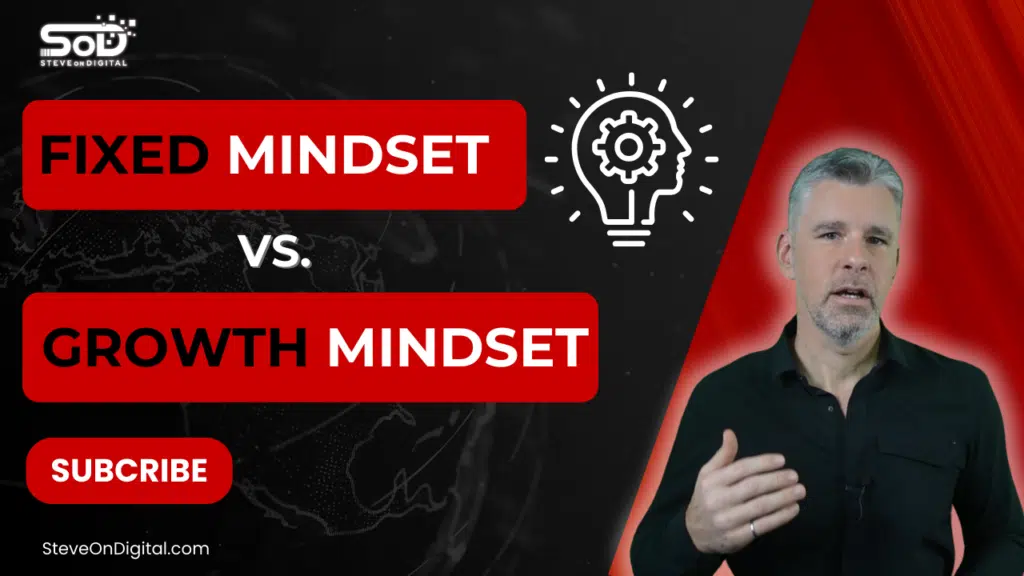
A growth mindset in business means believing that abilities and intelligence can improve through effort and learning. This approach fosters innovation, adaptability, and long-term success by encouraging continuous learning and improvement. Carol Dweck’s decades of research on growth mindset have shown how this approach can significantly influence organizational culture, leading to innovation and collaboration in the workplace. I’ve seen firsthand how adopting a growth mindset can transform a business. By focusing on challenges as opportunities, fostering team development, and promoting a culture of continuous improvement, businesses can stay competitive in a rapidly changing market. Let’s explore how this powerful mindset can drive success and innovation in your organization. I’m Steve, a digital transformation expert with a strong background in electrical engineering, an MBA, and a master’s in Project Management. I excel at helping SMEs navigate the digital landscape with practical insights. Let’s begin! Understanding Growth Mindset in Business A growth mindset in business is essential for fostering innovation, adaptability, and long-term success. By focusing on continuous learning and improvement, businesses can navigate challenges more effectively and stay competitive in a rapidly changing market. Definition and Origin of Growth Mindset The concept of a growth mindset originates from the work of Stanford University psychology professor Carol Dweck. She defined it as the belief that abilities and intelligence can be developed through dedication and hard work. This contrasts with a fixed mindset, where individuals believe their talents are innate and unchangeable. Growth Mindset vs. Fixed Mindset A growth mindset believes that intelligence and skills can improve with effort and persistence. In contrast, a fixed mindset believes that abilities and intelligence are static and unchangeable, which may hinder an individual’s potential. This fundamental difference impacts how individuals approach challenges and learning opportunities. Those with a growth mindset are more likely to embrace new challenges and view failures as opportunities to grow, whereas those with a fixed mindset may avoid challenges for fear of failure. Aspect Growth Mindset Fixed Mindset Belief Abilities can be developed Abilities are static and unchangeable View on Challenges Embraces challenges as opportunities to grow Avoids challenges due to fear of failure Response to Failure Sees failure as a learning opportunity Sees failure as a limit to abilities Effort Believes effort is essential for mastery Believes effort is fruitless if one lacks talent Learning Continuous learning and improvement are valued Avoids new learning opportunities The Role of Growth Mindset in Business Success Adopting a growth mindset can lead to significant long-term benefits for businesses. A growth mindset views intelligence, abilities, and talents as qualities that can be developed through effort and persistence. Companies that encourage a growth mindset often see increased innovation, better team development, and improved employee performance. By fostering an environment where continuous learning and improvement are valued, businesses can better adapt to changes and overcome obstacles. Key Characteristics of Growth Mindset Several traits define a growth mindset, making it a critical aspect of business success. Characteristic Description Embracing Challenges Views challenges as opportunities for growth and learning Effort and Persistence Recognizes that hard work and dedication are essential for success Learning from Mistakes Understands that mistakes are valuable learning opportunities Continuous Improvement Focuses on ongoing development and betterment Open to Feedback Welcomes feedback and uses it to improve Embracing Challenges A growth mindset views challenges as opportunities for growth and learning. In business, this means taking on new projects and exploring uncharted territories without fear of failure. By embracing challenges, businesses can innovate and stay ahead of the competition. Effort and Persistence Effort and persistence are crucial in overcoming obstacles and achieving success. A growth mindset acknowledges that hard work and dedication are essential components of progress. This approach helps businesses push through tough times and continue to grow. Learning from Mistakes Mistakes are valuable learning opportunities. A growth mindset encourages individuals to analyze their failures, understand what went wrong, and apply those lessons to future endeavors. This attitude helps businesses improve and avoid repeating past errors. Implementing Growth Mindset in Organizations Fostering a growth mindset within an organization requires practical steps and strategies. Leadership and Growth Mindset Leadership plays a pivotal role in promoting and sustaining a growth mindset culture. Leaders must model growth mindset behaviors, such as embracing challenges and learning from failures. By doing so, they set a positive example for the rest of the organization. Developing a Growth-Oriented Company Culture Creating a growth-oriented company culture involves promoting continuous improvement and innovation. This can be achieved by encouraging employees to take risks, experiment with new ideas, and share their insights and experiences. Training and Development Programs Implementing training programs helps employees develop new skills and perspectives. Training programs can help employees gain new perspectives by engaging in networking, sharing knowledge, and problem-solving with others. Providing opportunities for learning and growth ensures that employees stay engaged and motivated. These programs can include workshops, seminars, and online courses focused on developing a growth mindset. Benefits of Growth Mindset in Business Adopting a growth mindset in business brings a multitude of advantages. From fostering innovation to improving employee satisfaction, the benefits are extensive and impactful. Increased Innovation and Creativity A growth mindset fosters a culture of innovation and creativity by encouraging employees to think outside the box. This mindset drives individuals to explore new ideas and perspectives, leading to groundbreaking solutions and advancements. For instance, a company that values innovation can adapt quickly to market changes and stay ahead of competitors. According to a study by PwC, 60% of CEOs believe that creativity is the most important leadership quality for success in business. Enhanced Team Development Embracing a growth mindset positively impacts team development by promoting collaboration and continuous learning. A collaborative work environment, supported by leadership, encourages trust, innovation, and effective communication among employees. Teams with a growth mindset are more likely to embrace challenges together, leveraging each other’s strengths to achieve common goals. This collective effort leads to improved team dynamics and higher overall performance. From my experience, fostering a growth mindset
Dispelling the “I Am Too Old” Myth When Implementing Technology
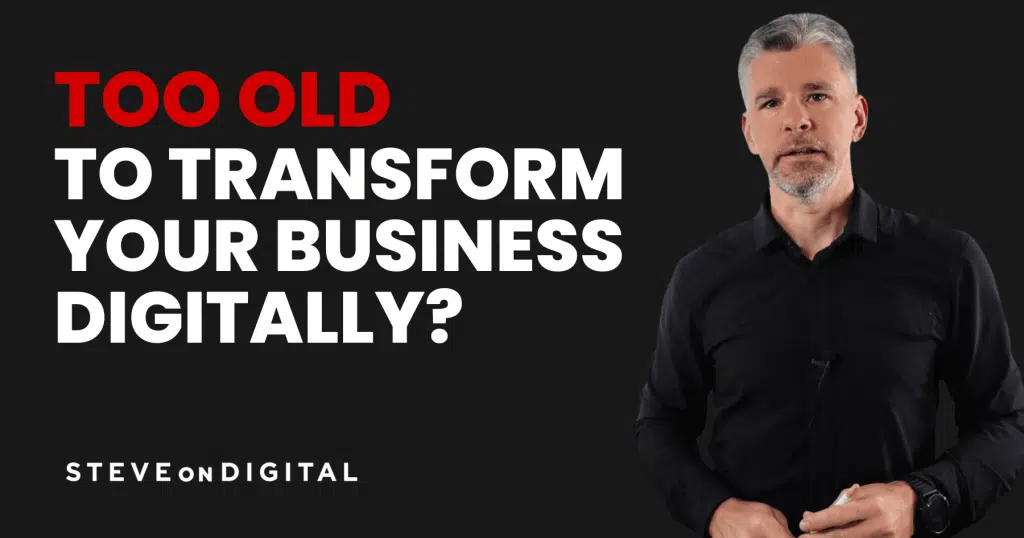
Ever think, “I’m just too old to learn new tech?” Is your solution to rely on younger people who you assume can navigate a digital transformation better than you can, at your age? Yes, I’ll give you that: millennials were born with technology surrounding them. But you have something younger people don’t have: business acumen. So, instead, team up with younger people, both sharing your respective knowledge so that the tech that is implemented responds to the business’s strategic needs. This requires continuous learning and a growth mindset. First of all, the idea that: being “too old” hampers your ability to comprehend and utilize technology is a misconception. It is a limiting belief, as age should never be a barrier to learning or adapting to new tools. Technology is designed to be intuitive and user-friendly, accommodating individuals from all generations. As a virtual CIO, I am a daily witness to entrepreneurs and executives leading successful digital transformations within their organizations. By recognizing that age carries no inherent disadvantage, business professionals can break free from this limiting belief and embrace technology with enthusiasm and curiosity. It’s also crucial to understand that technological advancements are not limited to a particular age group. The pace of innovation is ever-accelerating, and it demands a mindset of lifelong learning. By adopting a growth mindset, you, as a business professional, can actively seek opportunities to expand your technological literacy. There are so many online resources, courses, and workshops readily available to help individuals of all ages enhance their digital skills. Cultivating a culture of continuous learning within the workplace can foster an environment that encourages everyone to explore and adopt new technologies, regardless of their age or experience. Implementing technology successfully in a business context often requires a collaborative effort. Instead of succumbing to the belief that age inhibits understanding, business professionals can leverage intergenerational collaboration as a powerful tool. Younger employees can provide insights into emerging technologies, while seasoned professionals can contribute their industry expertise and critical thinking skills. By fostering a culture of collaboration and knowledge sharing, organizations can tap into the collective strengths of their workforce, bridging the gap between age groups and facilitating the successful integration of technology. The fear of the unknown can be a significant factor contributing to the belief that you are “too old” to understand technology. However, it’s important to recognize that fear is often unfounded and can be overcome. Embracing a trial-and-error approach, asking questions, and exploring technology in a supportive environment can make you more confident in using new applications and also dismantle the belief that age poses a barrier to technological proficiency. The idea that being “too old” to understand technology is a limiting belief that holds no basis in reality. By embracing a growth mindset, cultivating a culture of continuous learning, fostering collaboration, and seeking support, you can overcome this misconception and leverage technology to drive success in your organizations. Age should never be seen as an impediment, but rather as an asset that brings diverse perspectives and experiences to the table. By debunking this myth, you are empowered to embrace the limitless possibilities technology offers, regardless of age. You want to know how to create YOUR IT Roadmap in just a few steps? Get the Infographic: Creating YOUR Digital Roadmap
Skills Of A Successful Digital Leader: Do You Have What It Takes?

Digital leadership skills are crucial for navigating the modern business landscape. A digital leader must possess strategic thinking, innovation, and effective team management abilities. These skills enable leaders to implement digital strategies, manage technological changes, and lead teams successfully. The role of the Chief Digital Officer (CDO) is pivotal in digital leadership within organizations. However, the CDO’s responsibilities can sometimes create a silo effect, isolating digital initiatives from other business operations. In this guide, I will explore the essential skills every digital leader must have. Drawing from my personal experience and industry insights, I’ll provide practical advice on how to excel in digital leadership. Whether you are a small business owner or aspiring leader, this comprehensive guide will help you thrive in the digital age. I’m Steve, a digital transformation expert with a strong background in electrical engineering, an MBA, and a master’s in Project Management. I excel at helping SMEs navigate the digital landscape with practical insights. Let’s begin! Overview of Digital Leadership Digital leadership involves guiding an organization through the complexities of digital transformation, leveraging technology to drive business success. Effective digital leaders are not only tech-savvy but also skilled in strategic thinking, innovation, and team management. A digital transformation leader plays a crucial role in guiding organizations through significant changes, emphasizing essential skills such as inspirational leadership, strategic planning, and the ability to inspire teams toward a digital-first mindset. Importance of Digital Skills for Leaders In the digital age, leaders must possess a diverse set of digital skills. These skills enable them to implement digital strategies, manage technological changes, and lead their teams effectively. According to a study, 70% of new leadership skills are required to manage digital transformation successfully (DigitalDefynd). Successful digital leaders guide teams through digital transformation by fostering autonomy and open communication. Skill Description Strategic Thinking Ability to set and achieve strategic goals in a digital landscape. Innovation Fostering creativity and implementing innovative solutions to challenges. Team Management Building, leading, and motivating effective digital teams. Data Analysis Leveraging data-driven insights for informed decision-making. Communication Clear and effective communication with teams and stakeholders. Adaptability Embracing change and staying current with emerging technologies. Visionary Thinking Transformative Vision A transformative vision in the digital world is crucial for understanding market trends and the necessity for organizations to adapt to continuous changes. Digital leaders must be adept at problem-solving within a digital context. For example, during my tenure, I’ve seen how a clear vision can drive successful initiatives and help businesses adapt to market changes. Forward-Looking Perspective Setting clear objectives and strategies is essential for any digital leader. Developing a digital roadmap helps guide the team towards achieving long-term goals. According to Gartner, 72% of data and analytics leaders are heavily involved in their organization’s digital transformation, emphasizing the need for a strategic approach (Exploding Topics). Technology Understanding Digital Literacy Being literate in digital technologies is vital. This includes understanding how different technologies work and their potential impact on business processes. Past experiences with various technologies enhance a leader’s capability to drive digital initiatives. Adapting to New Technologies Keeping up with emerging technologies is crucial. Integrating new technologies into business processes can significantly improve efficiency and productivity. For instance, 45% of organizations are scaling up their cloud capabilities to support digital transformation efforts (Digital Adoption). Change Orientation Open-Mindedness Embracing change and fostering a growth mindset are critical traits for digital leaders. Encouraging team innovation and adaptability helps navigate the challenges of digital transformation. Effective leaders are those who inspire their teams to embrace new ideas and approaches. Managing Digital Transformation Leading successful digital transformations involves strategic planning and execution. Overcoming common challenges in digital change requires a leader to be proactive and resilient. Despite aligned leadership, 70% of digital transformation projects fall short of their goals, highlighting the need for robust change management strategies (Fit Small Business). The Chief Transformation Officer (CTO) plays a crucial role in driving the digitization of processes, transforming traditional workflows into more efficient digital operations. Leadership Skills Strong Decision-Making Effective decision-making is a cornerstone of successful digital leadership. As a digital leader, I understand the need to make pragmatic and focused decisions that drive the business forward. It’s essential to evaluate all available data, consider the potential outcomes, and choose the best course of action. According to DigitalDefynd, strategic thinking leaders achieve 33% more effective outcomes, highlighting the importance of clear and confident decision-making (DigitalDefynd). Employee engagement and clear communication are vital components of successful digital transformation, ensuring teams are equipped and informed throughout the digital journey. Leading with clarity and confidence instills trust and motivation in your team. When your team understands the decisions being made and the reasons behind them, they are more likely to buy into the vision and work towards common goals. Clear communication of decisions ensures everyone is on the same page, reducing confusion and increasing efficiency. Team Collaboration Building and leading effective digital teams is critical in the digital age. A strong team can achieve great things, especially when they work well together. I’ve found that fostering a culture of collaboration and open communication helps teams tackle complex tasks more effectively. The rise of remote work has increased the importance of strong virtual team management, with remote leadership surging by 80% since early 2020 (DigitalDefynd). Enhancing team communication and cooperation involves implementing tools and practices that facilitate seamless interaction. Digital tools like Slack, Microsoft Teams, and Asana can help streamline communication and project management. Effective leaders use these tools to ensure that team members are always connected and informed, which is essential for maintaining productivity and achieving strategic goals. Tool Purpose Slack Facilitates real-time communication and collaboration among team members. Microsoft Teams Combines chat, video meetings, and file collaboration in one platform. Asana Manages tasks, projects, and workflows for teams. Trello Visualizes project progress using boards and cards. Strategic Thinking Strategic Goals Setting and achieving strategic goals in a digital landscape requires a forward-thinking approach. As a digital leader, I prioritize aligning digital strategies
Why Management Support Is Vital For Digital Transformation Success
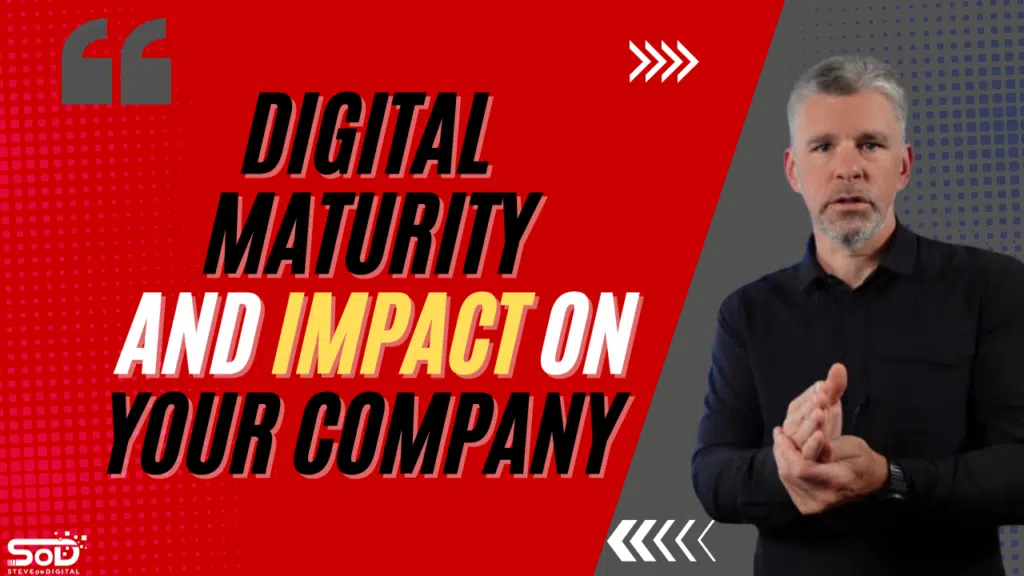
Management support is crucial for successful digital transformation. Without strong leadership backing, even the most well-planned digital transformation initiatives can fail. Management’s involvement ensures that digital technologies are effectively integrated into business processes, aligning with the company’s goals. Digital transformation is not just about technology; it’s about changing how a business operates and delivers value. From setting clear objectives to engaging employees, management plays a key role in driving this change. In my experience, businesses that have strong management support during digital transformation are more likely to achieve their goals and sustain long-term success. I’m Steve, a digital transformation expert with a strong background in electrical engineering, an MBA, and a master’s in Project Management. I excel at helping SMEs navigate the digital landscape with practical insights. Let’s begin! The Role of Management in Digital Transformation Management plays a pivotal role in the success of digital transformation initiatives. From my experience, without strong management support, even the most well-thought-out digital strategy can fail. Management’s involvement is not just necessary; it’s the cornerstone of a successful digital transformation. Importance of Management Support Why is management support so crucial? It’s simple. Management sets the tone for the entire organization. If the management team is fully on board with the digital transformation, it creates a ripple effect throughout the company. Employees are more likely to embrace change when they see that the leadership is committed and invested. Moreover, management support helps in aligning the digital transformation with the overall business strategy, ensuring that every digital initiative contributes to the company’s long-term goals. Statistics back this up. According to a study published in the MIT Sloan Management Review, companies with strong management support for digital transformation are 26% more likely to achieve their digital goals compared to those without such support. This underscores the vital role that management plays in steering the ship during a digital transformation. Management’s Role in Digital Strategy The role of management in digital strategy extends beyond just giving a nod of approval. Management must actively participate in the planning and execution of the digital transformation strategy. This includes setting clear objectives, allocating resources, and ensuring that the digital initiatives align with the company’s business model. I’ve seen companies succeed when their leaders took an active role in digital strategy, from the planning phase to implementation. A successful digital transformation requires management to understand both the potential and the limitations of digital technologies. It’s about making informed decisions that will have a positive impact on the business processes. For instance, during one of my consulting projects, a client’s management team was fully engaged in the digital transformation process, which resulted in a 15% increase in operational efficiency within the first year. This kind of result is only possible when management is actively involved in every step of the digital strategy. Case Study Overview To illustrate the impact of management on digital transformation, let’s look at a real-world example. The Digirati group, as mentioned earlier, is a prime example of a company that has successfully navigated its digital transformation journey thanks to strong management support. In this case, management not only supported the transformation but also drove it by making informed decisions and setting clear business objectives. The result? A significant increase in both revenue and market value, outperforming competitors who invested more in technology but lacked strong management support. This case study clearly shows that management intensity, more than just digital intensity, is the key to a successful transformation. The takeaway here is that without management support, even the best digital technologies will fall short. Understanding Digital Transformation To truly grasp the importance of digital transformation, it’s essential to understand what it entails and why it’s critical for businesses today. What is Digital Transformation? Digital transformation involves integrating digital technologies across every aspect of a business, fundamentally reshaping how the company functions and delivers value to its customers. It’s not just about digitizing existing processes but rethinking and redesigning them to take full advantage of new digital capabilities. This transformation is an ongoing process, not a one-time event, requiring continuous learning and adaptation to stay competitive in the digital age. In my years of working with various businesses, I’ve seen that successful digital transformation requires more than just technology. It demands a shift in mindset across the entire organization. Business leaders must be willing to embrace change and lead by example. This is where management support in digital transformation becomes crucial. Digital Transformation vs. Digitalization It’s important to differentiate between digital transformation and digitalization. Digitalization refers to the process of using digital technologies to change a business model and provide new revenue and value-producing opportunities. Digital transformation, on the other hand, goes beyond digitalization. It involves a cultural change that requires organizations to continually challenge the status quo, experiment, and get comfortable with failure. While digitalization might be the first step, digital transformation is the comprehensive overhaul of a company’s operations and strategy. For example, simply moving paper-based processes online is digitalization. However, when a company rethinks its entire customer experience from the ground up to integrate digital technology at every touchpoint, that’s digital transformation. Common Myths About Digital Transformation There are several misconceptions about digital transformation that I’ve encountered during my work. One of the most common myths is that digital transformation is all about technology. While technology is a significant component, it’s not the only factor. Successful digital transformation also requires a change in company culture, processes, and management support. Another myth is that digital transformation is a one-time project. In reality, it’s an ongoing process that requires continuous innovation and adaptation. Businesses must be prepared to evolve as new technologies emerge and market conditions change. The digital era is constantly evolving, and companies that fail to keep up risk falling behind. Finally, some believe that digital transformation is only for large enterprises. This couldn’t be further from the truth. Small businesses can also benefit greatly from digital transformation by leveraging digital technologies to improve
Guide To Successful Change Management In Digital Transformation | SOD
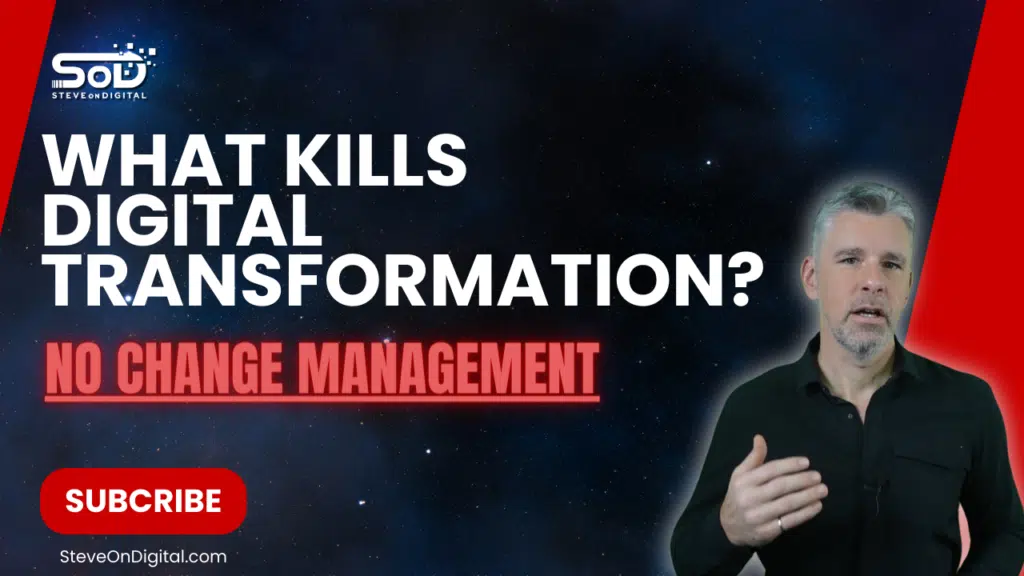
Change management is crucial for the success of any digital transformation. It involves guiding people through organizational changes to ensure smooth implementation and long-term success. Without effective change management, even the best digital transformation initiatives can fail. Digital transformation requires more than just new technology; it demands a shift in how a business operates, its processes, and its culture. By focusing on change management, I can help organizations adapt to new digital tools, overcome resistance, and achieve lasting success in the digital age. I’m Steve, a digital transformation expert with a strong background in electrical engineering, an MBA, and a master’s in Project Management. I excel at helping SMEs navigate the digital landscape with practical insights. Let’s begin! Understanding Digital Transformation Digital transformation is more than just a buzzword; it’s a business imperative. As technology evolves, so too must the way we do business. Digital transformation is the process of incorporating digital technologies across every aspect of a business, leading to significant changes in how the organization functions and delivers value to its customers. But to do this successfully, a structured and systematic approach is essential. The Need for Digital Transformation Let’s face it, the digital era is here, and it’s not waiting for anyone. Companies that fail to embrace digital transformation risk falling behind their competitors. Technological advancements, such as artificial intelligence and cloud computing, are driving businesses to innovate and optimize their operations. Moreover, customer expectations have shifted; they now demand seamless, personalized experiences, which can only be delivered through digital means. This makes digital transformation not just a choice, but a necessity for survival and growth. Key Components of Digital Transformation Digital transformation is a multifaceted process that touches every part of an organization. At its core, it involves adopting new technologies and integrating them into existing business processes. This often requires organizational restructuring, where new business models are developed to better align with the digital tools and strategies being implemented. These changes are not just about technology; they’re about rethinking how your business operates and how you can create more value for your customers. Common Challenges in Digital Transformation Despite its importance, digital transformation is no walk in the park. Many organizations face significant challenges, from resistance to change to technological hurdles. Resistance often stems from fear—fear of the unknown, fear of losing jobs, or simply fear of change itself. Technological challenges, on the other hand, can include anything from integrating new systems with existing ones to ensuring data security in the digital age. These obstacles can derail even the most well-planned digital transformation projects if not addressed properly. The Role of Change Management in Digital Transformation Now, let’s talk about the role of change management in digital transformation. Without a solid change management strategy, even the most promising digital transformation initiatives can fail. Change management is about more than just managing change; it’s about guiding your entire organization through a journey of transformation, ensuring that every employee is on board and that the changes are sustainable. Importance of a Comprehensive Change Management Strategy A comprehensive change management strategy is essential for navigating the complexities of digital transformation. This strategy should include clear communication, continuous support, and a structured approach to managing change. It’s about setting expectations, providing the necessary tools and resources, and ensuring that everyone in the organization understands and embraces the changes. This approach not only helps in achieving a smooth transition but also plays a crucial role in the overall success of the digital transformation. Change Management Versus Project Management It’s important to distinguish between change management and project management, as the two are often confused. While project management focuses on the technical side of implementing new processes and technologies, change management is all about the people. It’s about addressing the human side of change, ensuring that employees understand, accept, and support the new ways of working. Both are essential to digital transformation, but they serve different purposes. Benefits of Effective Change Management Effective change management brings numerous benefits. It increases employee engagement by making them feel involved and valued during the transformation process. This, in turn, leads to higher productivity and better business value. Moreover, a well-executed change management strategy can reduce the risk of failure, ensuring that the transformation is not just a one-time event but an ongoing process that drives continuous improvement and innovation. Developing a Change Management Strategy Creating a successful change management strategy is like plotting a course for a long journey—without a map, you’re bound to get lost. When it comes to digital transformation projects, this strategy becomes your guiding star. I’ve learned firsthand that having a clear plan not only helps to navigate through the complexities but also ensures everyone is on the same page. It’s about setting clear objectives, assessing readiness, and making sure leadership is actively engaged. Setting Clear Objectives and Vision When embarking on a digital transformation, the first step is to set clear objectives and a compelling vision. This isn’t just about where you want to go, but why you’re going there. From my experience, a clear vision acts as the anchor for the entire process. It aligns the team and keeps everyone focused on the end goal. In practical terms, this means defining what success looks like—whether it’s improving key performance indicators (KPIs), enhancing customer experiences, or streamlining business processes. These objectives should be specific, measurable, and tied directly to the overall business strategy. Assessing Organizational Readiness Before diving into any transformation, I always make it a point to assess the organization’s readiness. This involves taking a close look at the existing business processes and the current company culture. Are your processes outdated, or can they be easily adapted to new technologies? Is your company culture open to change, or are you likely to face resistance? Understanding where you stand is crucial for identifying potential roadblocks early on. This assessment isn’t just a one-time check; it’s an ongoing process that should be revisited as the transformation progresses.

